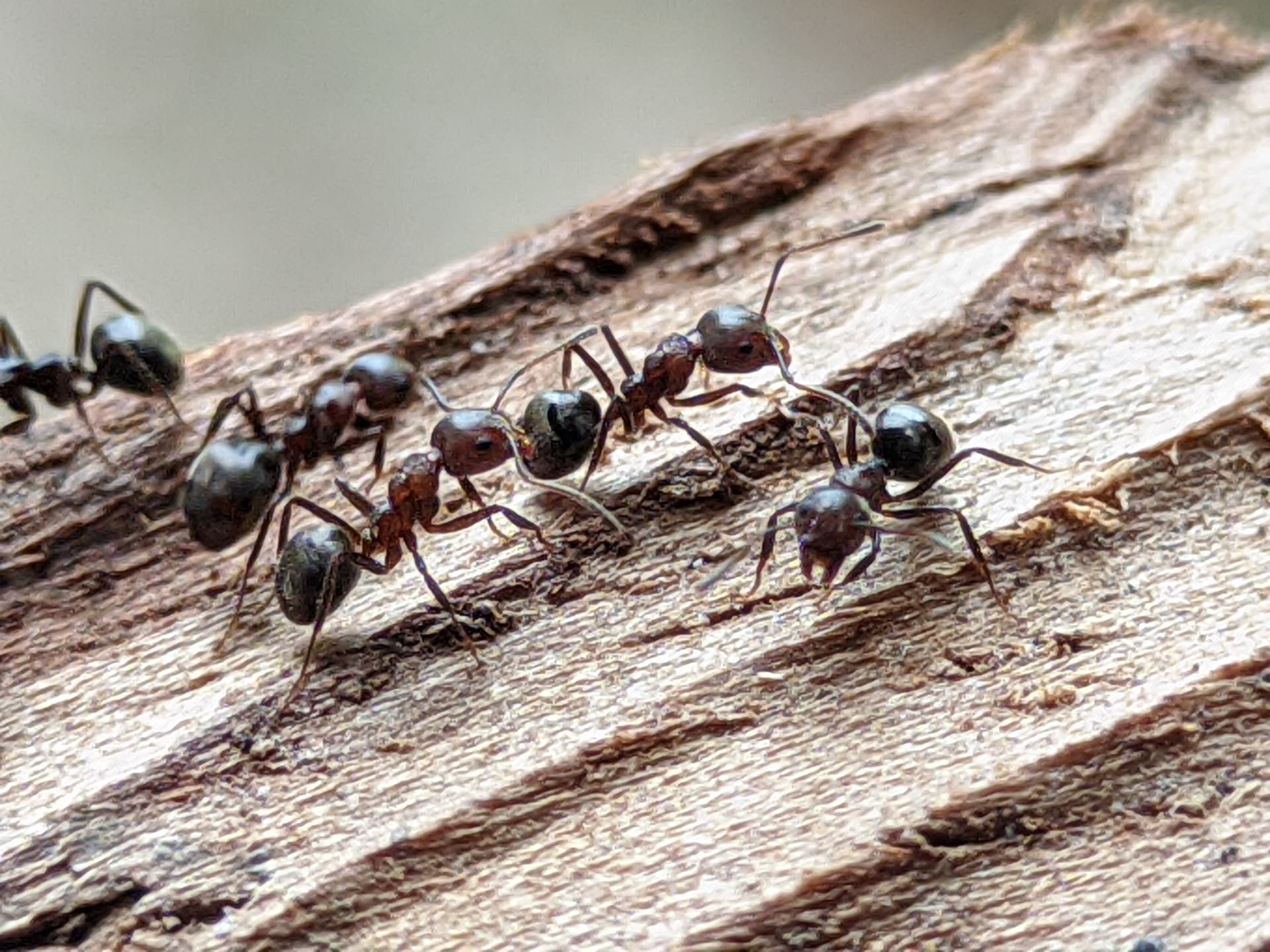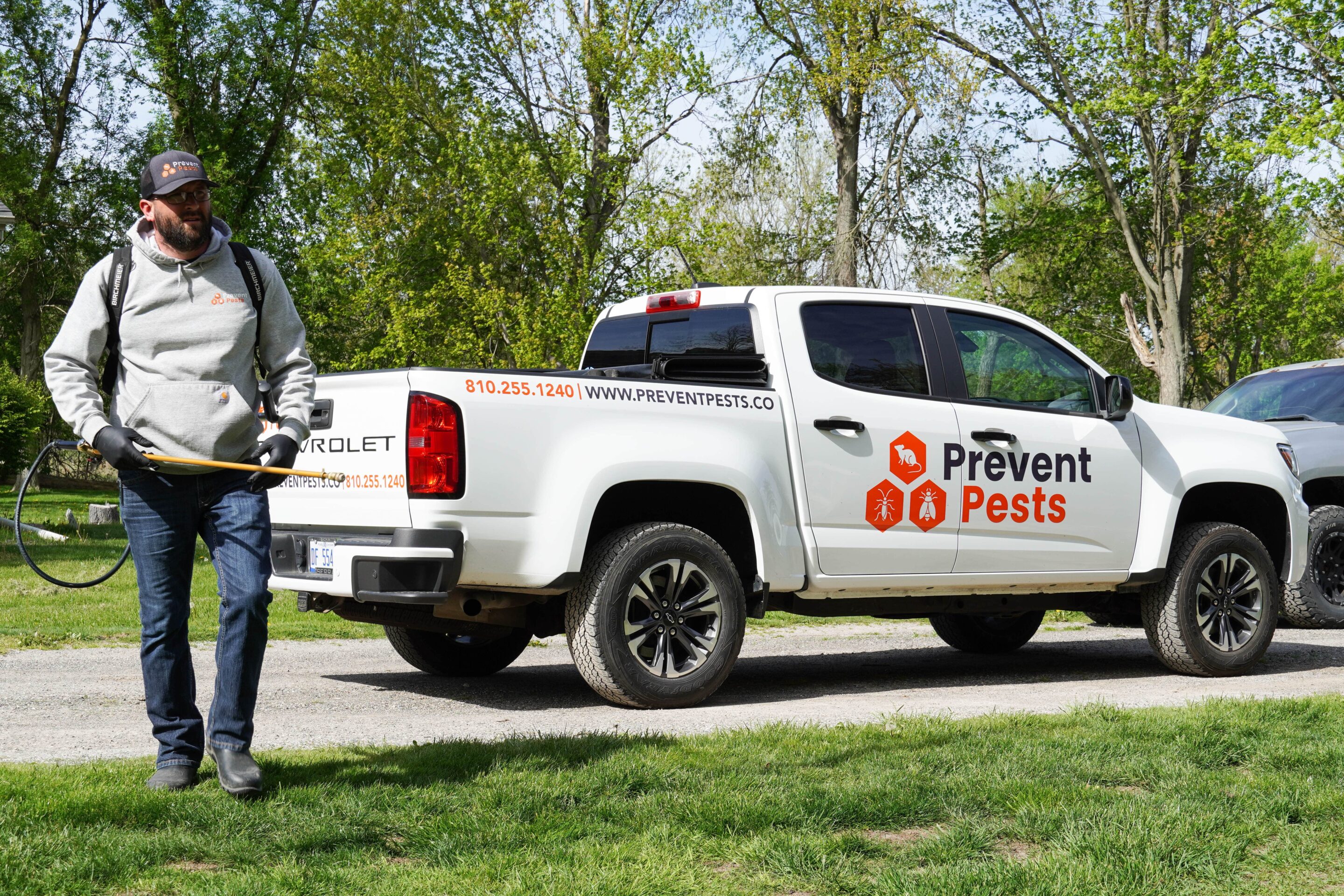Carpenter Ants
Facts & Information
Prevent Pest Control is always reliable. Always innovative.
What You Should Know About Carpenter Ants
The wood-eating carpenter ant is a widespread pest in North America. Along with all other species of ants, they are members of the Formicidae family and the Hymenoptera order of insects. Carpenter ants, in contrast to termites, build their nesting galleries by excavating tunnels made of wood rather than eating it. Their massive size, formidable jaws, and propensity to gradually eat away at wooden structures are their most distinctive features. Termites are more terrifying, but these pests are a constant worry for businesses and homes alike.

Our Services
Expertise and Reliability
Mosquito Guid
Tick Guid
Bed Bug Guid
Flea Guid
Cockroach Guid
Yellow Jacket Guid
Carpenter Ant Guid
Rodent Guid
What Carpenter Ants Look Like and How They Grow
Carpenter ants, one of the larger ant species, typically range in length from half an inch to one and a half inches. The head, thorax, and abdomen make up the main parts of their bodies. Mandibles, which are strong and used for chewing wood and carrying materials, are located on top of the head. Their elbowed antennae set them apart from other bug species.
Although it varies from species to species, most have either black or reddish coloring or a mix of the two. While some species of carpenter ant are entirely black or brownish, others have a shiny black head and thorax and a reddish abdomen.
In terms of size and function, male and female carpenter ants are essentially different. Foraging and nest construction are carried out by worker ants, who are sterile females. They are smaller and there are more of them. Reproduction is carried out by considerably larger queens, measuring up to ½ inch or even more. Except for their mating flights, males are smaller and wingless than queens.
The life cycle starts when the queen lays eggs. The worker ants take care of the larvae that hatch from these. Adult ant development begins with pupation. The time it takes for an organism to mature from an egg to an adult might vary widely depending on factors outside its control. In particular, queen carpenter ants can lay eggs and raise a new colony for many years after they emerge from their nest.
What Makes Carpenter Ants Different from Other Insects
One thing that sets carpenter ants apart from termites is their capacity to build nests out of wood without actually eating it. During mating season, both the males and queens can take flight, demonstrating their flight ability. Carpenter ants are capable of biting with their powerful jaws, although they do not sting. In the colony, they use their keen sense of smell for both finding food and communicating with one another. These ants can nest in both wet and dry wood, allowing them to survive in a variety of habitats.
Daily Routines and Living Habits of Carpenter Ants
The majority of carpenter ant activity, including foraging, occurs at night. Other insects, aphid honeydew, and leftover food from homes are the primary sources of protein and sugar in their diet. Reproduction occurs during warm months, when winged males and queens leave the nest to mate in a process called a nuptial flight. Queens look for good wood to build their nests after mating.
Carpenter ants, when housed indoors, tend to congregate in areas with wet or rotting wood, including eaves, window frames, and the space behind walls. When nesting outdoors, they favor hollow logs, stumps, and trees. Although they can survive in drier climates, these ants prefer wetter ones. Shaded, cool places with water are ideal for these plants, as they dislike direct sunlight. How active they are and where they like to build nests are both affected by weather conditions.
How to Spot and Understand a Carpenter Ant Infestation
Carpenter ants weaken beams, siding, and other wooden components as they tunnel through them to construct their nests, which can lead to structural damage if you happen to be infested with these ants. Audible rustling within walls, the presence of frass, tiny piles of wood shavings, proximity to wooden structures, and the presence of visible ant trails are all indicators of an infestation. Because they hide in decaying or otherwise compromised wood, finding them early can be difficult. Although they do not transmit any diseases, homeowners may experience anxiety and worry due to their presence.
How Carpenter Ants Can Affect Your Health and Safety
For the most part, carpenter ants aren’t dangerous to people’s health. Contrary to popular belief, they are not disease vectors. But their strong mandibles mean that their bites can irritate and even hurt a little. In certain instances, bites can cause localized swelling or allergic reactions, particularly in people who are already vulnerable. Carpenter ant bites may not sting, but they can break skin and, if not treated correctly, can cause secondary infections.
Exposure may cause more severe symptoms, like itching or swelling, for individuals who are allergic to bug bites. Recurring bites, though uncommon, may lead to skin irritation or pain. Carpenter ants aren’t particularly dangerous to humans, but they can cause damage to buildings.

Get a Free Quote Today!
"(Required)" indicates required fields
